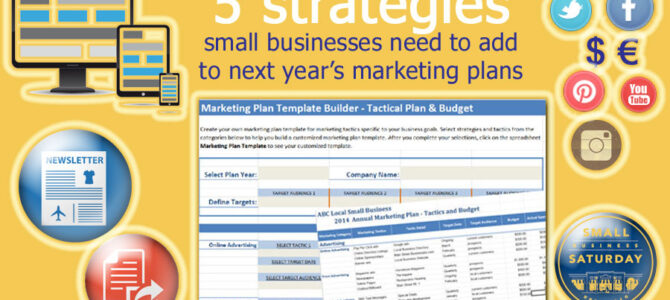Hiring a qualified Siding Contractor can help you save money in the long run. A reputable contractor will offer open pricing and be able to provide references from past customers. They will also have creative solutions for unforeseen problems that may arise during your remodel.

Make sure the contractor you choose has a local address, and is not using a post office box. Look for a contract that specifies timelines, payment installments and how inclement weather will be handled.
Whether you’re replacing your existing siding or adding a new layer, you need a contractor with experience and a track record of satisfied customers. Asking the right questions will help you find the best contractor to handle your job. Some of the important questions to ask include:
Do you have your own crews or subcontractors? The answer to this question will determine how much you pay for your siding project. Typically, contractors who employ their own crews are more experienced and reliable. In addition, you should also find out how they deal with unexpected issues that may arise during the project. For example, if your siding installer discovers minor damage that needs to be repaired before they finish installing the new siding, you’ll want to know how they will address this issue.
Siding contractors should be intimately familiar with the various types of siding materials. This will allow them to help you select the best material for your home and environment, ensuring that the siding you choose is durable and visually appealing. The right siding contractor will also be able to explain the pros and cons of each type of material, so you can make an informed decision that’s best for your budget and aesthetic preferences.
A quality siding contractor should provide you with an estimate for the total cost of your siding project, including labor and permit fees. It should also detail any extra charges or costs that may occur during the project. This information will allow you to compare estimates from multiple contractors and decide which one is the best for your project.
Before hiring a siding contractor, you should also inquire about the company’s financing options. Many companies offer a variety of payment plans to suit your needs. Some even offer interest-free financing for up to a year. You should also check if the company has a good reputation and is insured.
You should also consider how the company handles site preparation, cleanup, and waste removal. During the course of your project, your lawn furniture may need to be moved, landscaping will need to be temporarily removed, and old siding will need to be disposed of. A reputable contractor will take care of these details and ensure that they are done properly. They should also be able to provide you with copies of the building permits they’ve obtained.
Reliability
A trustworthy siding contractor will be able to provide you with the information you need to make an informed decision. This will include a detailed contract, pricing details, and an expected completion date. They should also be able to answer any questions you might have. Be wary of any contractor that asks for a large cash deposit or full payment up front.
Before hiring a contractor, ask for references and check out online reviews. This can give you insight into their level of expertise and work ethic. It is important to choose a contractor with a high number of positive reviews and testimonials. Also, make sure to check that the company is licensed in your area. If they are not, you may have problems with insurance claims or work-related accidents.
When choosing a siding contractor, be sure to get quotes from several different companies. Compare the quotes to ensure that they are comprehensive and detail all aspects of the project. Be cautious of contractors that quote drastically different prices, as they may not offer quality materials or a professional job.
It is also important to find out whether the contractor will be using subcontractors or if their crews will be performing the work on site. This will help you determine if you are getting value for your money. If the contractor is going to use subcontractors, you should request a list of their qualifications and experience. You should also inquire about the company’s warranty and guarantee on their workmanship.
A reliable contractor will be able to keep their word and complete the job in a timely manner. They will also be able to keep you updated on the status of the project. They will take care to protect your home from damage and be respectful of your property. They will also inform you if there are any weather-related delays and how they plan to manage them. They should be willing to work with you to meet your schedule and budget expectations. They should also be able to accommodate any special requests you might have.
Customer service
A quality siding contractor will be able to answer your questions in a courteous and professional manner. They will also keep in close communication with you throughout the entire project. This will ensure that your needs are met and that the work is completed to your satisfaction. You should also inquire about the type of warranty that is available for the products they use.
A good siding contractor will be able to provide you with quotes that are detailed and specific about the costs of materials and labor. They will also be able to explain the different options for siding and give you a clear picture of what your finished product will look like. This will help you make an informed decision about the best siding for your home.
In addition to providing quotes, a quality siding contractor will also provide you with an outline of the timeline for completion of the project. This will help you plan for any inconvenience that may occur during the project, such as delays due to weather conditions.
Lastly, you should ask your prospective siding contractors if they are licensed and insured. This will help you avoid being ripped off by unethical contractors. A reputable contractor should have worker’s compensation and liability insurance in case someone is injured on the job.
You should also ask the contractor about their experience and whether they specialize in siding installation. A siding contractor with extensive experience and a specialty in this field will be more likely to deliver high-quality results. They should also be able to provide you with references from past clients, as well as a portfolio of previous projects.
When choosing a siding contractor, it is important to take the time to review your options and choose one that suits your home and budget. It is also a good idea to get quotes from several companies before making a decision. This will help you find the best siding contractor for your needs and save you money in the long run.
A siding contractor is a company that specializes in the installation of various types of exterior finishes, including wood, aluminum, and vinyl. They also install gutters, eavestroughs, and downspouts. Siding contractors are typically licensed and insured, and many of them have special training in the construction industry.
Insurance
If you’re looking for a siding contractor, be sure to hire one who has the right insurance policies. A reputable company will have both liability and workers’ compensation insurance to protect themselves and their clients from claims made against them. Additionally, they will have the proper licenses to perform work in your area and provide a warranty on their workmanship. This will ensure that your project is done correctly and that any issues are resolved promptly.
Liability insurance is important for siding installation contractors, as it covers claims resulting from accidental damage to the property of clients or third parties. This type of coverage can cover legal fees and medical costs, as well as the cost to repair or replace damaged items. It is also vital for resolving disputes over warranties.
The best way to avoid disputes is to choose a contractor with VSI certification, which validates the skills of siding installers and provides homeowners with peace of mind. Choosing a certified professional will help ensure that your warranty remains intact, allowing you to get repairs or replacements for free or at a lower cost.
Disputes over siding warranties can often be settled with mediation or arbitration, but it is crucial to document all interactions with the homeowner and installers. This will help you to advocate for your rights if the issue isn’t resolved in a timely manner.
In addition to ensuring that you have the right insurance coverage, it is also important to take preventative measures to keep your siding in good condition. This includes regularly cleaning your siding to remove dirt and debris, and addressing any issues as soon as they arise. This will minimize the amount of maintenance required, and may even extend the lifespan of your siding.
Insurance is a necessary part of running a siding installation business, but it is not enough to protect you from every risk. Siding installation is a dangerous job, and it is not uncommon for people to get injured while working. It is also possible for equipment to be stolen or damaged during the installation process. For these reasons, you should consider buying a commercial package policy that combines general liability with workers’ compensation and property insurance.
